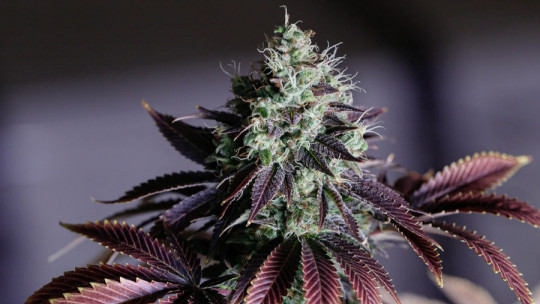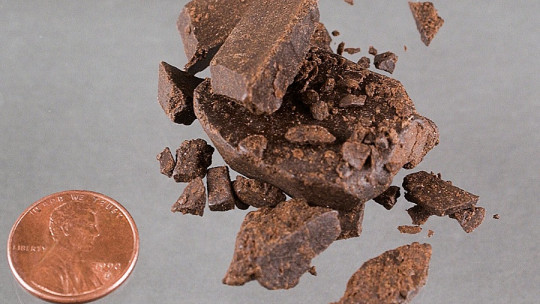The use of cannabis has experienced a notable increase in recent decades, driven by its legalization and greater social acceptance in numerous countries. While its therapeutic effects have been recognized, especially in the management of pain and anxiety, cannabis use during pregnancy has raised increasing concerns among the medical and scientific community.
Prenatal exposure to cannabis is a topic of particular interest due to potential adverse effects on fetal brain development. During pregnancy, the fetal brain goes through critical stages of neuronal formation and connection, being especially vulnerable to external influences. Recent studies have focused on how tetrahydrocannabinol (THC), the main psychoactive substance in cannabis, can interfere with this process, generating lasting changes in brain structure and connectivity.
This is how prenatal exposure to cannabis affects pregnancy
This article aims to explore the effects of prenatal cannabis exposure, highlighting changes in brain structure and connectivity, as well as potential long-term implications for child and adolescent development. Understanding these risks is crucial to informing expectant mothers and developing effective public health policies that protect the next generations.
Background and context
Cannabis use has increased significantly in recent decades, driven in part by legalization and growing social acceptance in many parts of the world. Originally used for recreational purposes, its medicinal use has also gained ground, promoted for its analgesic and therapeutic effects. However, this increase in cannabis use raises concerns, especially regarding its use during pregnancy.
The legalization of cannabis in several states and countries has led to a more benign perception of the drug, which has influenced the behavior of pregnant women. According to recent studies, a growing number of pregnant women report using cannabis, hoping to relieve symptoms such as morning sickness, chronic pain and stress. This trend is alarming due to growing scientific evidence suggesting that prenatal cannabis exposure may have adverse effects on the development of the fetus.
Historically, concerns about drug use during pregnancy have focused on substances such as alcohol and tobacco, the harmful effects of which are well documented. However, cannabis, often perceived as less dangerous, has begun to receive more attention in medical research. Recent studies have begun to unravel the complex effects of tetrahydrocannabinol (THC), the main psychoactive component of cannabis, on the developing brain of the fetus. This research is crucial, since the fetal brain is particularly vulnerable to exogenous substances during critical stages of its development.
Fetal development and prenatal exposure
Fetal brain development is a complex and delicate process that begins shortly after conception and continues throughout pregnancy. During this time, millions of neurons form and connect, laying the foundation for all future cognitive and motor functions. This process is highly susceptible to external influences, and any alteration can have long-term consequences on the child’s health and development.
Cannabis contains more than 100 chemical compounds, with tetrahydrocannabinol (THC) being the best known for its psychoactive effects. THC can cross the placenta and reach the fetus, potentially interfering with normal brain development. During pregnancy, the endocannabinoid system, which plays a crucial role in the regulation of various physiological processes, is particularly active and vulnerable to external alterations. Exposure to THC can alter this system, affecting neurogenesis, neuronal migration, and synapse formation.
The specific impact of cannabis on fetal development depends on several factors, including the amount and frequency of use, the time of pregnancy at which it is used, and individual susceptibility. Recent research has shown that prenatal cannabis exposure can cause changes in brain structure, especially in areas related to cognitive and emotional function, such as the prefrontal cortex and hippocampus.
Additionally, animal and human studies suggest that prenatal cannabis exposure may lead to decreased birth weight, attention and behavioral problems, and an increased risk of mood and anxiety disorders in childhood and adolescence. These findings underscore the importance of avoiding cannabis use during pregnancy to protect fetal brain development and ensure healthy growth.
Changes in brain structure
Prenatal exposure to cannabis has been linked to significant alterations in fetal brain structure, which may have lasting implications on cognitive and behavioral development. Neuroimaging studies have provided evidence on how cannabis use during pregnancy can affect specific areas of the brain particularly those involved in cognitive and emotional functions.
1. Prefrontal cortex
One of the most affected areas is the prefrontal cortex, a region crucial for decision making, impulse control and emotional regulation. Research has shown that exposure to THC during prenatal development can lead to a reduction in the cortical thickness of this area which is associated with difficulties in decision-making and behavioral problems in childhood and adolescence.
2. Amygdala
Additionally, changes have been observed in the amygdala, a key structure in processing emotions and stress responses which could explain the increased susceptibility to anxiety disorders and emotional problems in children exposed to cannabis in utero.
3. Hippocampus
The hippocampus, another affected brain region, is essential for memory and learning. Studies have shown that prenatal exposure to THC can result in a decrease in the volume of the hippocampus, which could contribute to memory problems and learning difficulties in childhood. These structural alterations have been correlated with deficits in memory tests and academic performance.
The effects of marijuana on brain connectivity
In addition to structural changes, prenatal cannabis exposure can also affect brain connectivity, that is, how different regions of the brain communicate with each other. Brain connectivity is essential for the integration of cognitive and emotional functions, and any alteration can have significant consequences for development and behavior.
1. Formation and strengthening of neural connections
Recent research has shown that exposure to tetrahydrocannabinol (THC) during pregnancy can alter the formation and strengthening of neuronal connections. Neuroimaging studies have revealed that children exposed to cannabis in utero show differences in the functional connectivity of key brain networks, such as the default mode network, which is involved in introspection and behavioral regulation. These alterations can manifest themselves in difficulties concentrating, memory problems and difficulties regulating emotions.
2. Connectivity problems between areas
Particularly concerning is evidence that connectivity between the prefrontal cortex and other brain areas, such as the amygdala and hippocampus, may be compromised. This connectivity is essential for impulse control, decision making, and stress management. Children with altered connectivity in these areas may be more likely to develop mood disorders, behavioral problems, and academic difficulties.
Long term implications
Alterations in brain structure and connectivity due to prenatal cannabis exposure may have lasting consequences on child and adolescent development. In this section we will discuss some of the main long-term problems of prenatal cannabis exposure.
1. Cognitive problems
Studies suggest that children exposed to THC in utero are at increased risk of developing cognitive problems, such as difficulties in memory and learning, as well as attention and behavior disorders.
2. Emotional problems
In the long term, these children may also be more susceptible to emotional problems, including anxiety disorders and depression. Interference with the normal development of the prefrontal cortex and other critical brain areas can result in greater impulsivity and problems in emotional regulation affecting their academic performance and interpersonal relationships.
3. Complex early detection
Early detection of these problems is crucial to implement interventions that can mitigate their effects. Educational support programs and behavioral therapies may be effective in helping these children overcome difficulties arising from prenatal cannabis exposure. Additionally, it is essential to educate expectant mothers about the risks associated with cannabis use during pregnancy.
Conclusions
Prenatal exposure to cannabis can alter the brain structure and connectivity of the fetus, leading to long-term cognitive and emotional problems. Early detection and appropriate interventions are crucial to mitigate these effects. It is vital to educate pregnant women about the risks of cannabis use and continue research to develop effective prevention and support strategies, ensuring healthy development for future generations.









